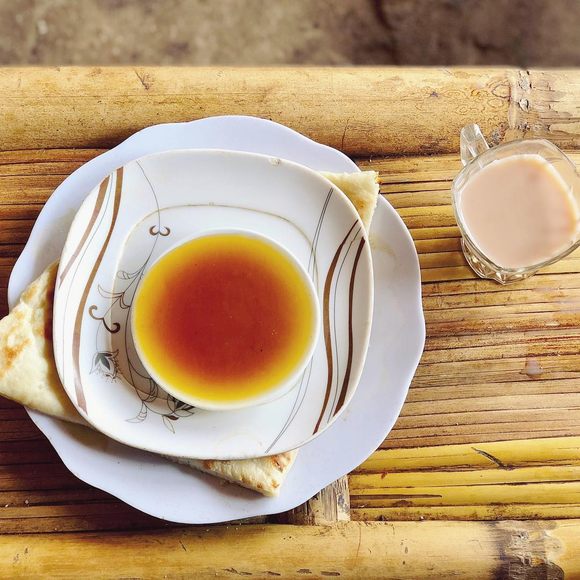Ingredients & Condiments
Harenna Honey
In an Ethiopian forest, a dying breed of beekeepers scales dangerously tall trees to harvest nectar from handmade hives.
Deep in the Harenna forest, located inside Ethiopia’s Bale Mountains National Park, beekeepers hand-carve the hives that will house their bees. They hollow out two pieces of tree trunks, fill one side with straw, then bind them together with bamboo and vines. To make sure the vessel’s aroma is enticing to a queen, they smoke it over a beeswax and moss fire. Finally, they hoist the hive high into the tree canopies to keep it out of the reach of predators.
Ethiopians have practiced beekeeping for thousands of years. As most of the country’s honey producers have started to use faster techniques, these beekeepers, who live in and around the village of Rira within the Harenna forest, maintain their traditions. The work is not only laborious, but dangerous: Beekeepers must harvest at night, when the hive’s residents are more subdued, or risk painful stings. Wearing no protective gear, they scale the tall trees with a rope, smoke out the swarm with a torch made from bound lichen, and retrieve the honeycombs.
Tasters say the resulting amber-hued honey has a creamy texture and a flavor that’s smoky, slightly herbal, and mellow in sweetness. It’s often used on flatbread, as a medicine, or as an ingredient in t’ej, a honey wine. Households store the liquid in gourds until a special occasion. And the funky, saccharine wine is certainly celebration-worthy. Some might even say it’s the bee’s knees.
Where to Try It
-
Bale Mountain Lodge Website
Bale Mountains National Park, EthiopiaThe lodge offers tours in the park so you can watch how the honey is harvested.
Written By
 rachelrummel
rachelrummel
Sources
- www.bbc.com/travel/story/20180123-the-last-beekeepers-of-ethiopias-harenna-forest
- balemountains.org/plan-your-trip/activities/honey/
- www.fondazioneslowfood.com/en/slow-food-presidia/rira-honey/
- eurekamag.com/research/036/974/036974725.php
- www.sciencedirect.com/science/article/pii/S030881461300811X
- www.instagram.com/p/BqazWbuBcXo/















